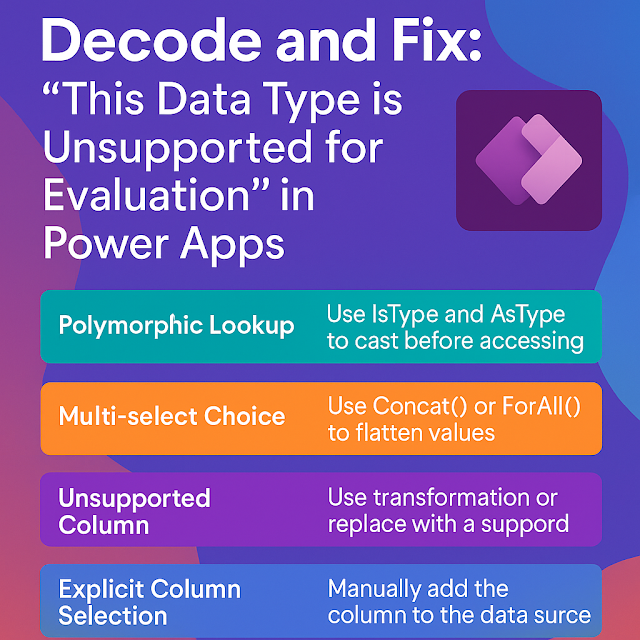Dataverse Elastic Tables: Features, Limitations, and Best Practices
Elastic Tables in Microsoft Dataverse are designed for scenarios requiring large-scale, high-volume data storage and rapid read/write operations. Unlike standard Dataverse tables that use a relational SQL-based structure, Elastic Tables store data in Azure Cosmos DB, leveraging its NoSQL, JSON-based architecture for flexibility and scalability. This enables organizations to efficiently manage billions of records with automatic partitioning, indexing, and schema flexibility — without impacting system performance. From a technical perspective, Elastic Tables are ideal for storing telemetry, audit logs, or time-series data that changes frequently but doesn’t require complex relationships or transactional consistency. They support standard Dataverse APIs for CRUD operations, integrate seamlessly with Power BI and Power Automate, and maintain Dataverse’s security model. In essence, Elastic Tables combine the elasticity of Cosmos DB with the governance and accessibility of Dataverse, making them perfect for modern, data-intensive business applications.
Elastic Tables in Microsoft Dataverse are a special type of table designed to store and manage massive amounts of data efficiently — far beyond what traditional Dataverse tables are optimized for. They enable high-volume, low-cost, and scalable data storage, making them ideal for scenarios like telemetry, logging, auditing, and IoT data ingestion.
Concept Overview
In traditional Dataverse tables, each record is stored in a way that’s optimized for relational transactions (OLTP) — great for business entities like Accounts, Contacts, or Opportunities, but not for millions of fast-arriving events.
Elastic Tables, on the other hand, use Azure Cosmos DB under the hood to store data in a NoSQL-like structure, which provides:
- Massive scalability
- Flexible schema
- Fast ingestion and retrieval of large data volumes
When to Use Elastic Tables
Use Elastic Tables when:
- You need to store large volumes of non-transactional data (millions or billions of rows).
- You’re capturing logs, telemetry, IoT signals, or audit events.
- You don’t need complex relationships or business rules on the data.
- You need high-throughput data ingestion from external systems or streaming data sources.
Avoid Elastic Tables when:
- You need relational integrity (e.g., parent-child relationships).
- You rely on Dataverse features like business rules, workflows, or plugins.
- You require frequent updates to the same records.
From a Solution Architect’s Perspective
As an architect, you should consider:
- Data lifecycle: How long will this data be retained? (Elastic Tables support data retention policies.)
- Integration pattern: Use Dataverse APIs or Azure Data Factory / Logic Apps for ingestion.
- Security: Elastic Tables still use Dataverse security (row- and column-level access).
- Analytics: Combine Elastic Tables with Power BI DirectQuery for real-time analysis.
- Coexistence: Use standard tables for master data and Elastic Tables for large event data.
Example Scenario
Imagine a Field Service app tracking equipment sensor data:
- Each machine sends 10 readings per minute → millions of records per day.
- Storing this in standard Dataverse tables would be costly and slow.
- By using an Elastic Table (e.g., EquipmentTelemetry), you can ingest and analyze data in near real-time without performance degradation.
Integration Possibilities
- Power Automate / Logic Apps: Ingest high-frequency data.
- Power BI: Build analytics dashboards directly on Elastic Table data.
- Custom Apps / APIs: Write data via Dataverse Web API or SDK.
Summary:
Elastic Tables in Dataverse provide a scalable way to store and manage large volumes of data by integrating with Azure Cosmos DB. They extend Dataverse’s capabilities beyond traditional relational storage, offering high-performance read and write operations for massive datasets such as logs, telemetry, and IoT data. While maintaining Dataverse’s familiar interface, API access, and security controls, Elastic Tables leverage Cosmos DB’s elastic storage and global distribution features. This allows organizations to handle dynamic, large-scale data scenarios efficiently while still benefiting from Dataverse’s governance, integration, and Power Platform connectivity.














Comments
Post a Comment